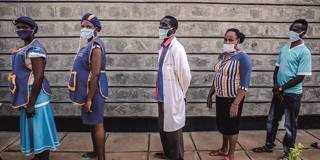
Lipstick and COVID-19
The pandemic is a stark reminder that gender is a powerful, deep-rooted, and universal social determinant of health. Ushering in the healthier societies we seek requires viewing gender equality as a public good.

The pandemic is a stark reminder that gender is a powerful, deep-rooted, and universal social determinant of health. Ushering in the healthier societies we seek requires viewing gender equality as a public good.
LONDON – “Is my lipstick protecting me against COVID-19?” ranks as one of the more intriguing email queries we have received from a member of the public since we began coordinating the world’s largest tracker of sex-disaggregated data on the pandemic. In fact, the question points to an important universal truth regarding public health.